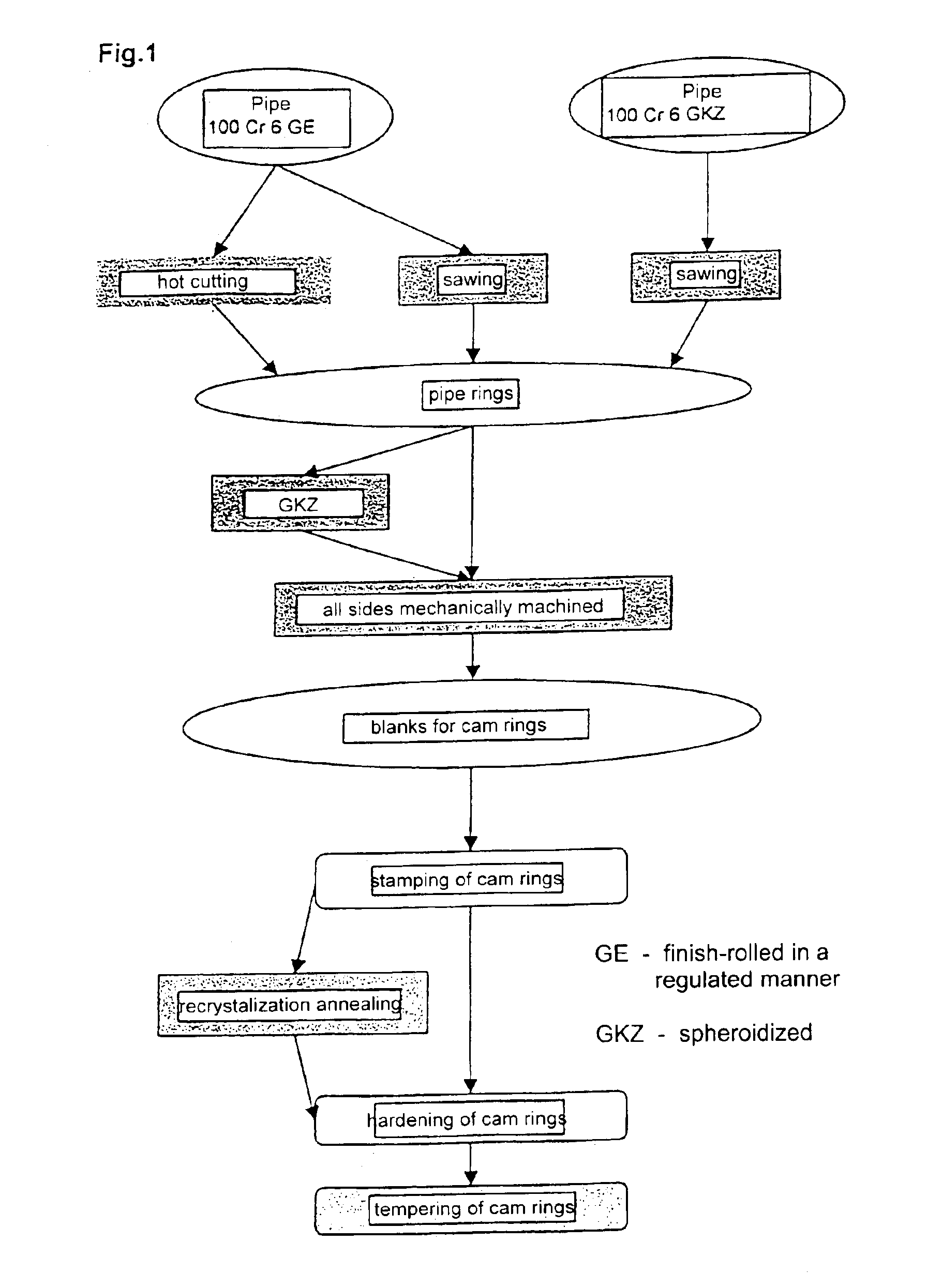Method for producing metallic, non-rotationally symmetrical rings with a constant wall thickness over their circumference
a non-rotational symmetry, constant wall thickness technology, applied in the direction of valve details, furnace types, cams, etc., can solve the problems of 30% yield, high cost of cnc turning and milling, high material input, etc., and achieve the effect of reducing material input and shortening cycle times
- Summary
- Abstract
- Description
- Claims
- Application Information
AI Technical Summary
Benefits of technology
Problems solved by technology
Method used
Image
Examples
Embodiment Construction
[0030]The possible manufacturing modes for producing non-rotationally symmetric rings, particularly cam rings, are shown schematically in FIG. 1.
[0031]A hot-finished pipe of roller bearing steel, particularly 100 Cr 6, which has been finish-rolled in a regulated manner (left-hand side) or spheroidized after rolling is taken as a starting point. Cutting can be carried out by means of hot cutting or cold sawing. The ring blanks which are produced in this way are mechanically machined on all sides. When hot cutting is used, the severed ring blanks are also optionally spheroidized prior to mechanical machining. The blanks produced in this way form the starting product for the non-rotationally symmetric rings. The circular rings are pressed into the desired shape, e.g., in the shape of a cam ring, by a cold stamping. The cam rings are hardened in a final treatment and are then tempered in order to retain the desired final strength and hardness. The cam rings are optionally subjected to r...
PUM
| Property | Measurement | Unit |
|---|---|---|
| thickness | aaaaa | aaaaa |
| thickness | aaaaa | aaaaa |
| length | aaaaa | aaaaa |
Abstract
Description
Claims
Application Information
 Login to View More
Login to View More - R&D
- Intellectual Property
- Life Sciences
- Materials
- Tech Scout
- Unparalleled Data Quality
- Higher Quality Content
- 60% Fewer Hallucinations
Browse by: Latest US Patents, China's latest patents, Technical Efficacy Thesaurus, Application Domain, Technology Topic, Popular Technical Reports.
© 2025 PatSnap. All rights reserved.Legal|Privacy policy|Modern Slavery Act Transparency Statement|Sitemap|About US| Contact US: help@patsnap.com



